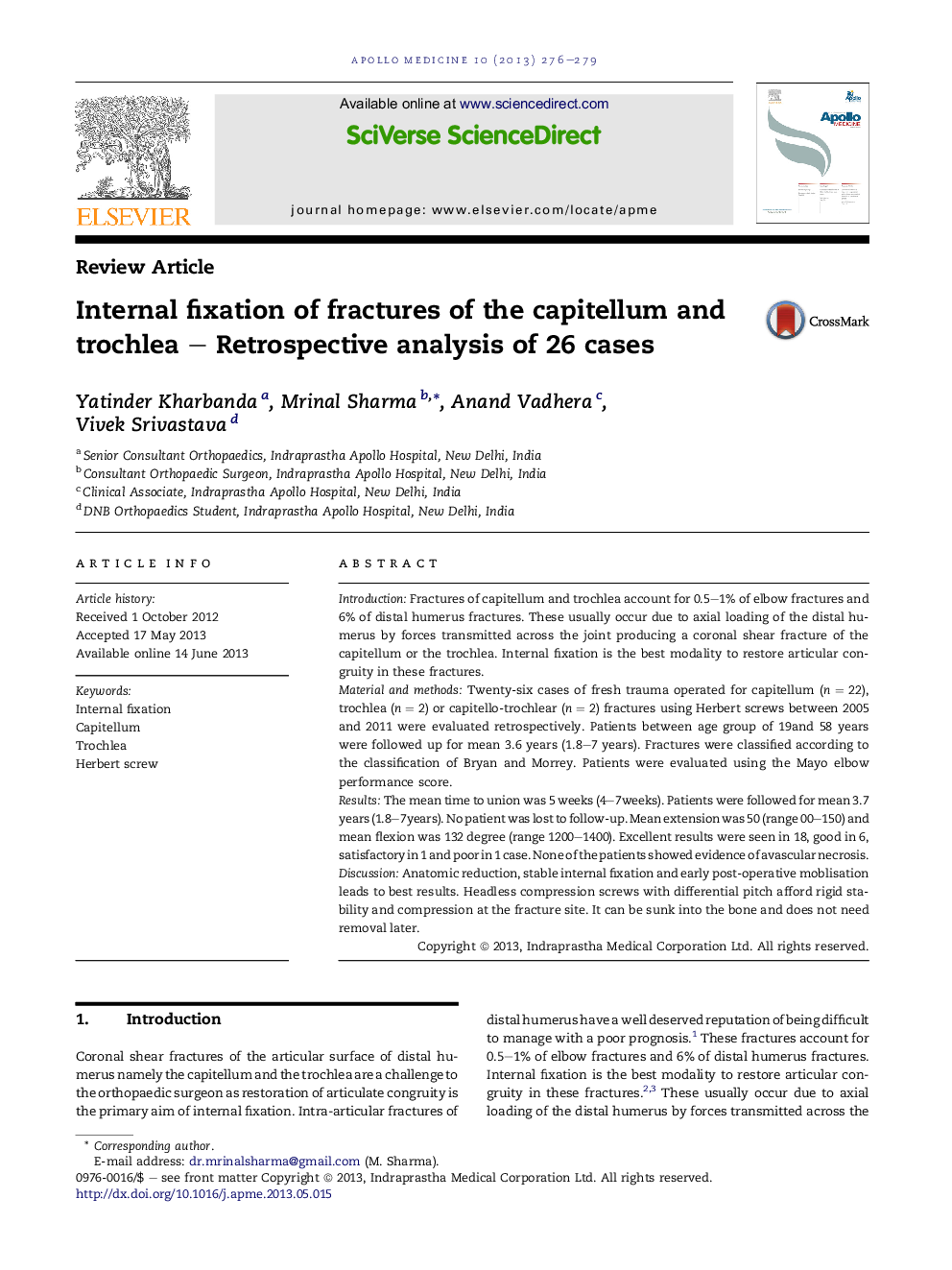| Article ID | Journal | Published Year | Pages | File Type |
|---|---|---|---|---|
| 3234992 | Apollo Medicine | 2013 | 4 Pages |
IntroductionFractures of capitellum and trochlea account for 0.5–1% of elbow fractures and 6% of distal humerus fractures. These usually occur due to axial loading of the distal humerus by forces transmitted across the joint producing a coronal shear fracture of the capitellum or the trochlea. Internal fixation is the best modality to restore articular congruity in these fractures.Material and methodsTwenty-six cases of fresh trauma operated for capitellum (n = 22), trochlea (n = 2) or capitello-trochlear (n = 2) fractures using Herbert screws between 2005 and 2011 were evaluated retrospectively. Patients between age group of 19and 58 years were followed up for mean 3.6 years (1.8–7 years). Fractures were classified according to the classification of Bryan and Morrey. Patients were evaluated using the Mayo elbow performance score.ResultsThe mean time to union was 5 weeks (4–7weeks). Patients were followed for mean 3.7 years (1.8–7years). No patient was lost to follow-up. Mean extension was 50 (range 00–150) and mean flexion was 132 degree (range 1200–1400). Excellent results were seen in 18, good in 6, satisfactory in 1 and poor in 1 case. None of the patients showed evidence of avascular necrosis.DiscussionAnatomic reduction, stable internal fixation and early post-operative moblisation leads to best results. Headless compression screws with differential pitch afford rigid stability and compression at the fracture site. It can be sunk into the bone and does not need removal later.
